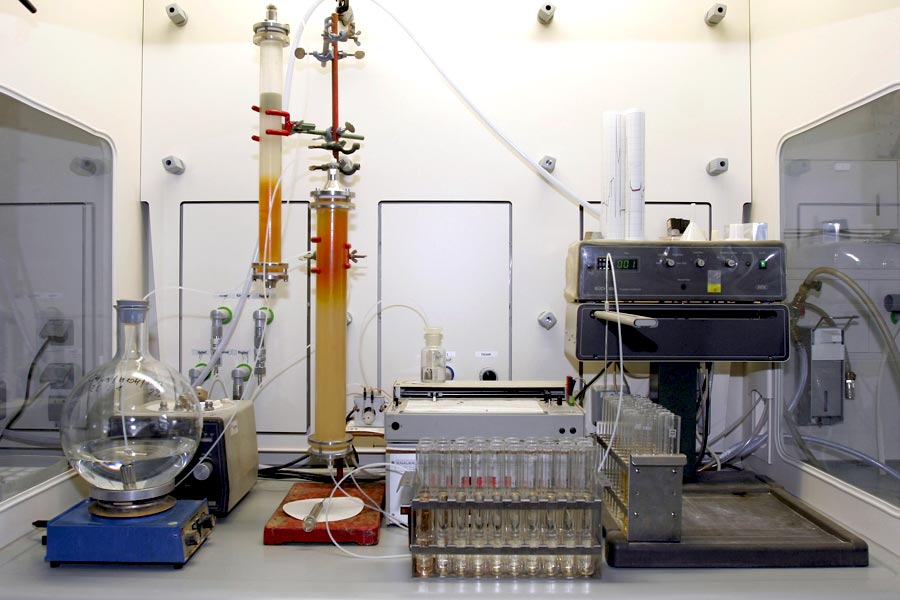Chromatography Columns is an important technique used across various industries like pharmaceutical, biotechnology, food processing etc. for separation, purification and analysis of mixtures. There are different modes of chromatography used based on the type of samples like gas chromatography, liquid chromatography etc. Over the years, chromatography has evolved significantly with advancement in technology. One such advancement is the introduction of prepacked chromatography columns which have revolutionized the process of chromatography.
What are Prepacked Chromatography Columns?
The Prepacked Chromatography Columns refer to chromatography columns that come prepacked with the chromatographic stationary phase like silica, polymers already loaded inside the column tube. In the traditional method of column packing, the stationary phase needed to be packed manually inside an empty column tube which was a laborious and time-consuming process requiring significant expertise. It was difficult to get consistent and reproducible results with manual packing.
With prepacked columns, this packing step is eliminated as the column comes ready to use. The stationary phase material is first slurry packed into the column tube under precise controlled conditions during the manufacturing process. This ensures uniform packing density and distribution of the stationary phase within the columns. Several quality control checks are also performed to guarantee column performance.
Advantages of using Prepacked Columns
Convenience and ease of use
Being prepacked, these columns are very convenient and easy to use. They can be directly connected to the chromatography system without any packing or conditioning requirement. This eliminates the need for elaborate packing equipment and expertise for column packing.
Reproducibility
The stationary phase distribution within the prepacked columns is highly consistent and reproducible due to automated manufacturing. This improves the precision and reliability of chromatography results.
Method transferability
As the column parameters like pore size, particle size are controlled and quality checked, methods developed on one prepacked column can be directly transferred to other columns of same type. This enables robust method development and scalability.
Versatility
Large variety of prepacked columns are available with different stationary phases, particle sizes and dimensions suited for different sample types and separation requirements. Columns also come in 1ml to 25L volumes providing flexibility.
Compatibility with automated systems
Integration with robotic liquid handling and chromatography systems is facilitated by the standardized format and plug and play nature of prepacked columns. This streamlines automated workflows in analytical laboratories.
Reduced solvent usage
Nano and sub-2 μm particle prepacked columns with high permeability allow running separations at high flow rates and pressures. This significantly reduces solvent consumption and analysis time.
Popular Types of Prepacked Columns
Based on the stationary phase chemistry, some commonly used prepacked column types are:
Reverse Phase Columns: Employ non-polar stationary phases like C18, C8, phenyl, biphenyl for retention of non-polar and slightly polar analytes from aqueous mobile phases. Ideal for separation of peptides, proteins etc.
Normal Phase Columns: Made up of polar stationary phases like silica, diol for separation utilizing differences in polarity between analytes. Used for separation of lipids, steroids etc.
Ion Exchange Columns: Have charged functional groups to separate molecules based on ionic interaction. Useful for purification of proteins, nucleic acids etc.
Size Exclusion Columns: Have pore structures that allow differential separation based on size/mass of molecules entering the column. Broadly divide mixture into fractions based on molecular weight.
Affinity Columns: Attached with specific ligands for purification of target molecules via affinity interaction. Widely employed for isolation of antibodies, enzymes etc.
Challenges and Future Prospects
While Prepacked Chromatography Columns have gained immense popularity and proven highly beneficial, there are still some challenges and room for improvement. Column lifetime needs to be extended beyond the current limits specially for purification applications involving multiple cycles. Development of self-regenerating or re-usable columns can further boost sustainability and reduce costs. Integration with microfluidic technologies also holds promise to miniaturize columns and analytically systems. Overall, research in novel stationary phases, engineering column material and formats as well as advanced analytics will continue advancing prepacked chromatography in the coming years.
Prepacked have revolutionized the chromatography workflow and made it widely accessible across user levels and applications. Their inherent benefits of reproducibility, ease of use, versatility and compatibility with automation have fuelled their increasing utilization in separation science. Continued innovations are further expanding their role and impact. Prepacked columns will keep playing a crucial part in enabling high throughput and efficient chromatography based research, development and manufacturing.
*Note:
1. Source: Coherent Market Insights, Public sources, Desk research
2. We have leveraged AI tools to mine information and compile it


